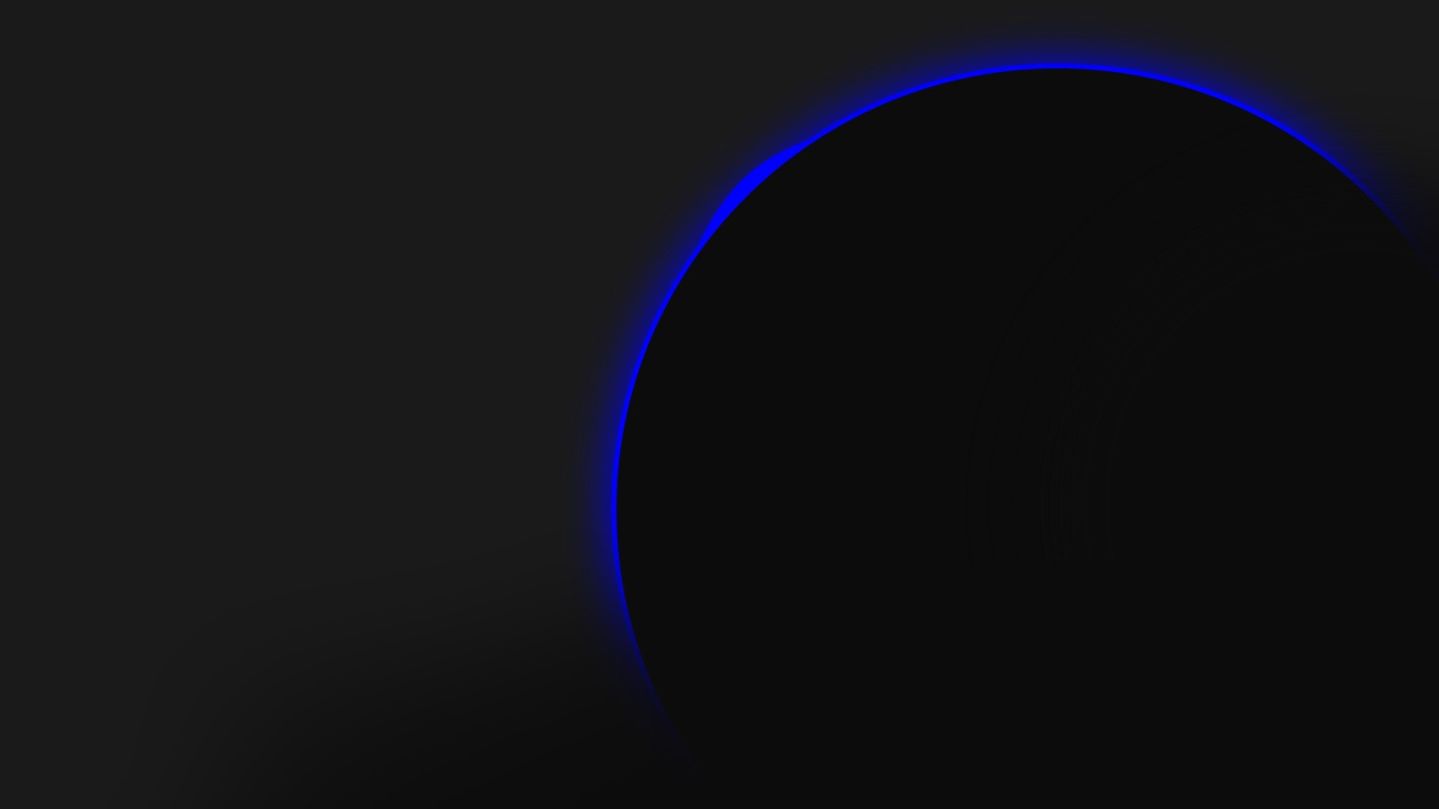Editor’s Note: For complete coverage of the Eclipse of the Century go to cnn.com/eclipse. Watch live, in virtual reality, as the eclipse moves coast to coast Monday.
Story highlights
Clouds and rain can ruin an eclipse experience
The Southeast US may see the worst weather
It’s probably the most anticipated weather forecast in recent memory. Millions of people across the United States are tuning in to their local meteorologists or refreshing their favorite apps, all hoping for the same thing: clear skies overhead today for the total solar eclipse.
By now you have no doubt heard about the Eclipse of the Century, the first total eclipse to occur in the United States since 1979 and the first to cross from coast to coast in 99 years.
If you are one of the 200 million Americans who live within a one-day drive of the path of totality, hopefully you are in place to view the awe-inspiring event.
But as predictable and consistent as we know the eclipse will be – we know to the second when and where the moon will cast its shadow upon the Earth – the weather remains the biggest wild card when it comes to a successful viewing experience.
“When eclipse day dawns, weather will trump all the geometric calculations and careful planning that eclipse-chasers have worried about for years,” said Kelly Beatty, senior editor of Sky & Telescope magazine and a veteran eclipse chaser.
“That day’s forecast is the one element that can’t be determined in advance. It’s a simple truth,” he said. “In the end, the best place to observe the eclipse will be from wherever it’s clear.”
Slackers’ guide to the 2017 solar eclipse
Weather for the eclipse
Note: Click here to see continuously updating eclipse forecast graphics from CNN Weather.
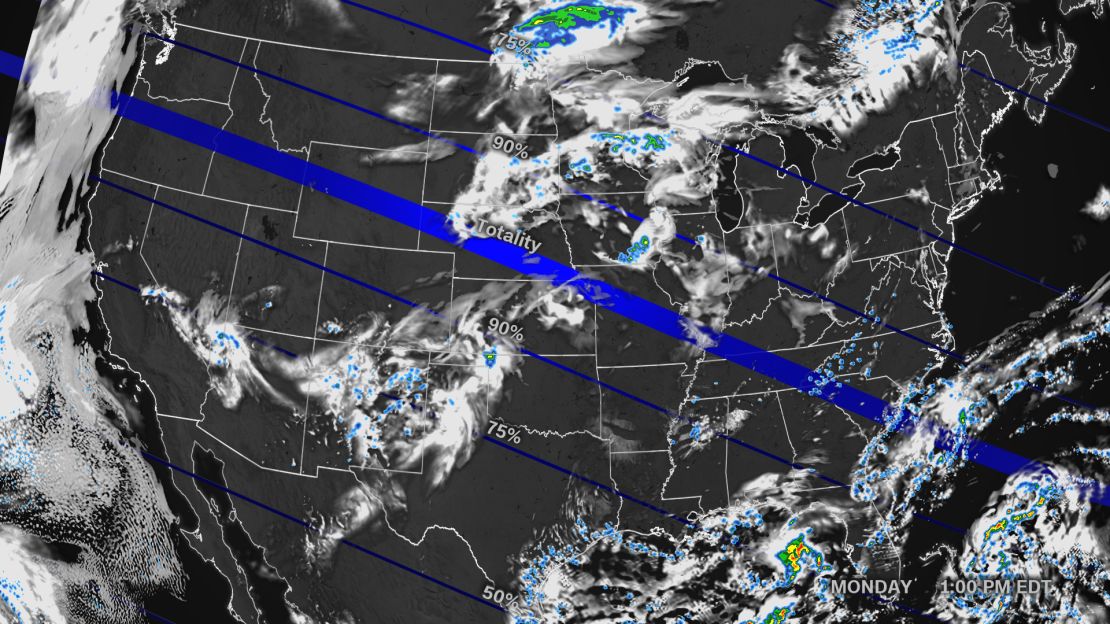
While there is not a major weather feature that will bring widespread bad weather to a specific region, there are a few trouble spots to watch today as the moon’s shadow moves over the country.
Oregon
The Pacific Northwest, the first location in North America to see the eclipse, is set to have some of the best weather. The Northwest is clear of any large-scale storm systems, though some clouds are present along a trailing front from Montana into Wyoming and Idaho. Still, these spots have much more clear sky than clouds today.
The Western US also has the advantage of experiencing the eclipse in the morning, before the heat of the day has had a chance to build up clouds and storms.
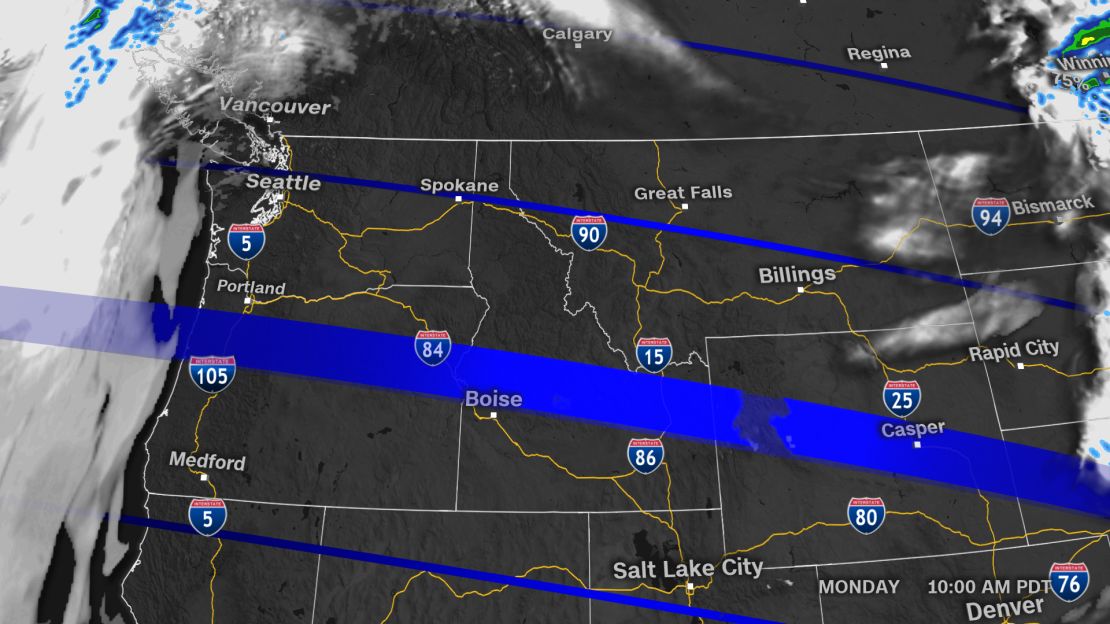
Locations near the ocean may still be dealing with some morning fog and low clouds, however, which could shroud the eclipse on Oregon’s Pacific coast.
Midwest
Over the central United States, an area of low pressure will be spreading from the northern Great Plains to the Midwest, bringing clouds and rain. It looks like most of this unsettled weather will stay north of the eclipse’s path of totality, from Iowa and Minnesota east to the Great Lakes region.
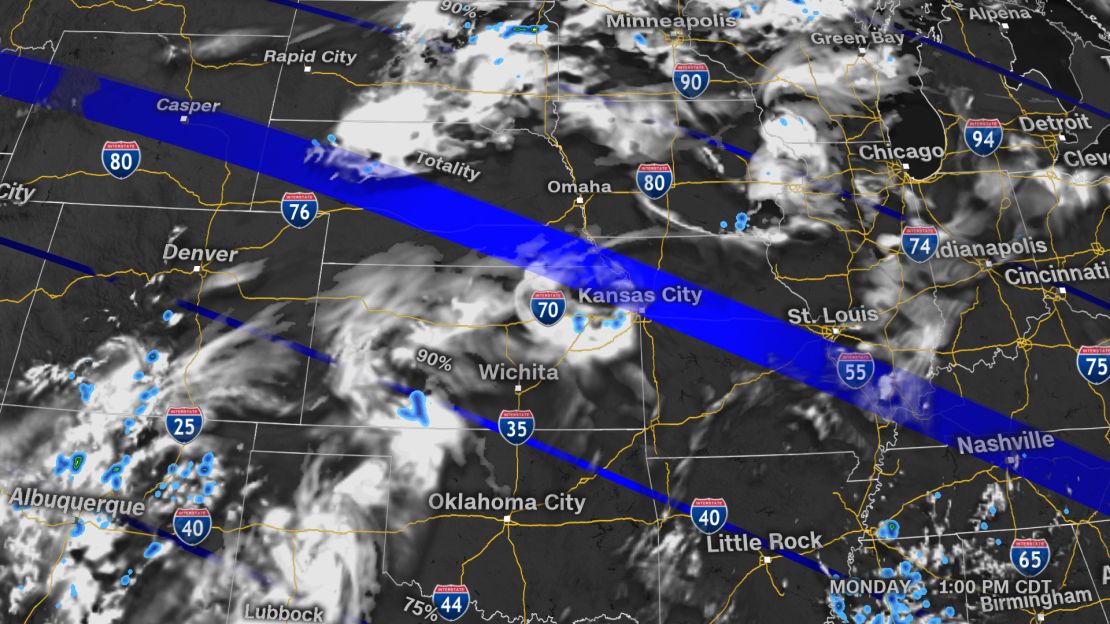
The system is bringing enough unstable and humid air from the south to create large areas of clouds and even some storms to the key states of Nebraska, Kansas and Missouri. A combination of early-morning low clouds and early-afternoon storms may mean eclipse watchers will need to dodge clouds for a clear view in many locations over the Great Plains.
Southeast
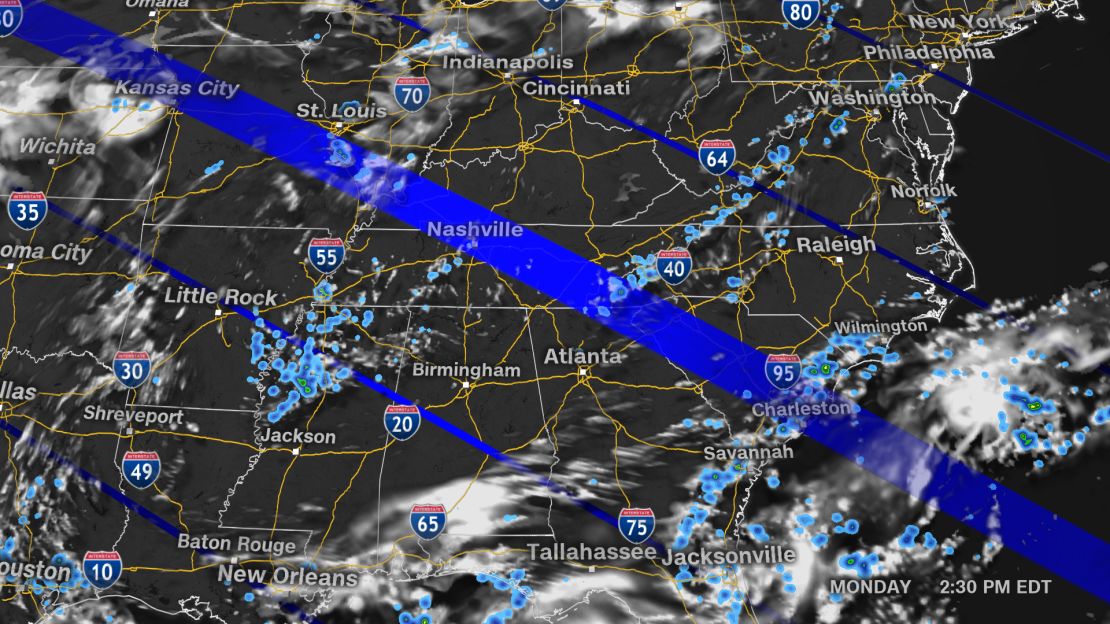
A stalled frontal boundary and onshore flow will trigger clouds and storms in a few portions of the Southeast, namely Georgia and the Carolinas. The extent of the clouds and storms should increase as the heat of the day builds, which could start happening by the 2 p.m. hour when the eclipse is peaking. But it appears the skies will be mostly sunny for a vast majority of the region.
Clouds and storms will be most likely along the coast (looking at you, Charleston) and in the Appalachian Mountains, where viewing conditions could be poor during peak totality.
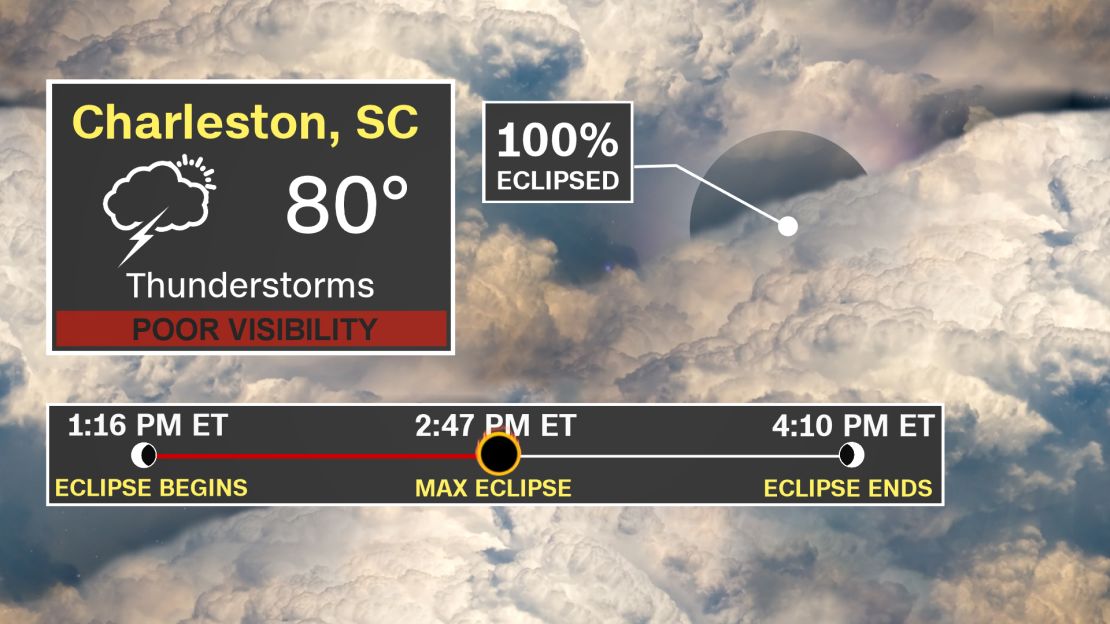
What will you see if the weather is bad?
“It’s called being clouded-out,” said Beatty, who has had three of eclipse chases disrupted by the weather: 1991 in Hawaii, 2004 in South Africa and 2013 in Kenya. “All were disappointing,” he admitted.
As long as you are in the path of totality, you will still “experience the eclipse,” even if there are clouds obscuring your view.
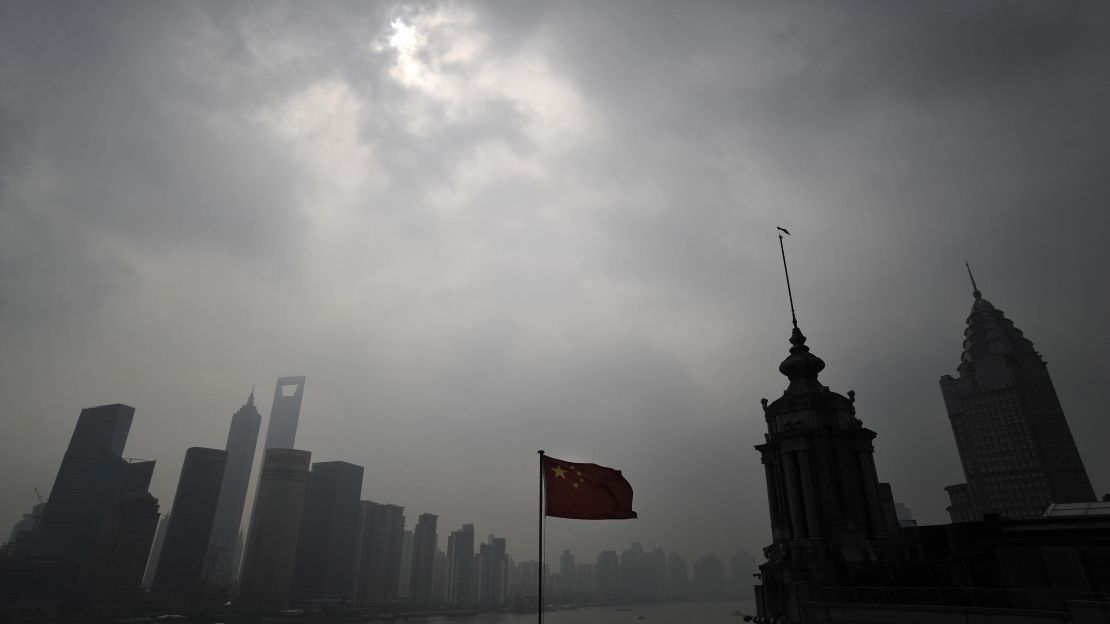
“Remember, the sun is 93 million miles away. The shadow of the moon will still darken the sky,” said Dave Jones, founder and CEO of StormCenter Communications, whose group is helping states in the path of the eclipse prepare for the event. “If it is cloudy, it will get even darker” than if the skies were clear.
A lot of the effect from the clouds will depend on their thickness.
High, thin clouds may still allow for a view of the sun’s oval and the eclipsing moon moving across.
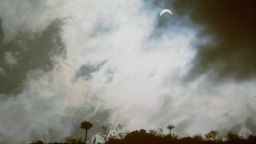
As long as the clouds are not too thick, “the temperature should drop a bit too,” according to Beatty.
Scattered clouds, as you might expect, can be hit or miss, leaving eclipse viewers to play the odds as to whether one of those puffy white monsters will block their much-anticipated view.
But some good news: Total eclipses can actually improve local weather conditions in the moments before totality.
Cumulus clouds, the “fair-weather clouds” that occur frequently on warm summer days (such as in August), will tend to disappear as the sun’s rays begin to darken.
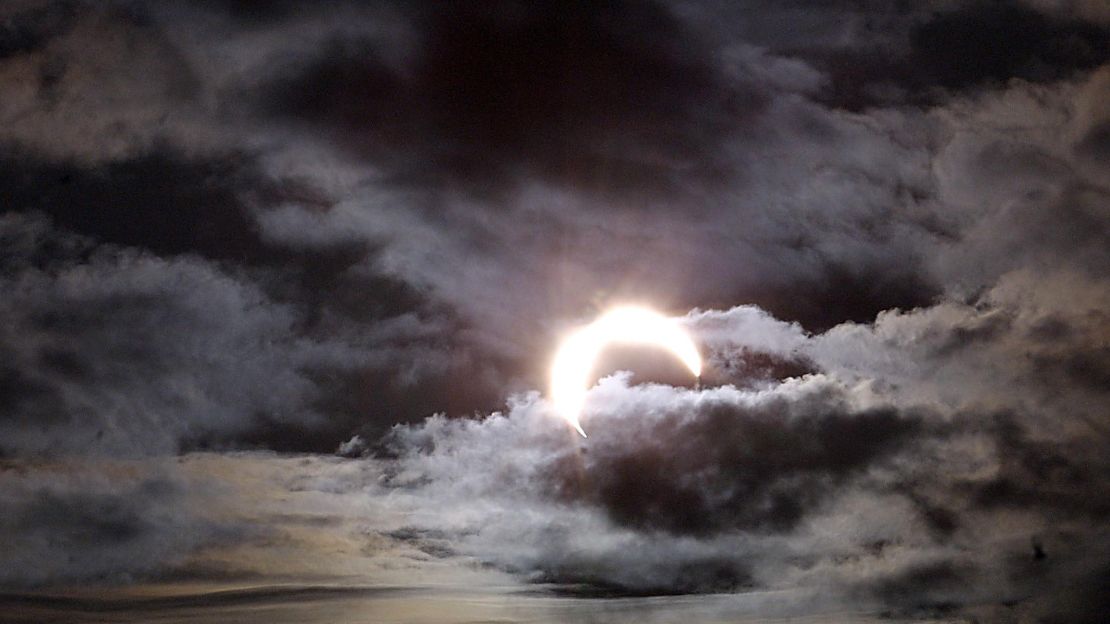
“Because they are driven by convective currents (from the sun’s heat), cumulus clouds tend to dissipate as totality nears,” Beatty revealed.
Unfortunately, if the clouds are too thick, and especially if rain is present, much of the magic of the eclipse is lost.
Beatty said bluntly, “if it’s raining, it’ll still get dark too – but I can’t think of anything more depressing.”
So it’s going to rain – now what?
Your bag is packed, you’ve got your camera and eclipse glasses, your hotel room that you booked last year is waiting for you – but the forecast is calling for persistent rain. Now what?
If fighting traffic or sleeping in your vehicle doesn’t sound worth it, Beatty has a few other suggestions.
“If you are stuck under bad weather, watch one of the many eclipse webcasts available online and start planning ahead – either for the 2019 total eclipse in Chile or the 2024 total eclipse that crosses the US from Texas to Maine.”
CNN Meteorologist Judson Jones contributed to this report.
